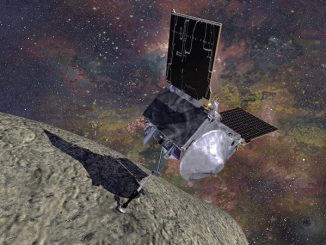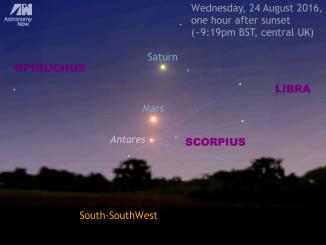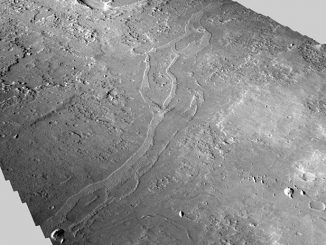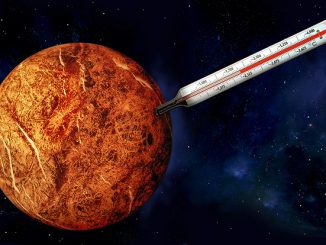
Month: August 2016


See the triple lineup of Antares, Mars and Saturn tonight
Observers in the British Isles with a clear sky one hour after sunset on 24 August should find a location that offers an unobstructed view of the south-southwest horizon. Here you will see first-magnitude star Antares in the constellation Scorpius, Mars and Saturn all in a line easily encompassed by low-power binoculars in the bright twilight.

Fossilised rivers suggest warm, wet ancient Mars
Extensive systems of fossilised riverbeds have been discovered on an ancient region of the Martian surface on a northern plain called Arabia Terra, supporting the idea that the now cold and dry Red Planet had a warm and wet climate about 4 billion years ago, according to University College London-led research.

World’s biggest telescope meets second-fastest supercomputer
A prototype part of the software system to manage data from the Square Kilometre Array (SKA) telescope has run on the world’s second-fastest supercomputer in China. The SKA is arguably the world’s largest science project, with the low-frequency part of the telescope alone set to have more than a quarter of a million antennas facing the sky.



Astronomers identify a young heavyweight star in the Milky Way
Researchers have identified a young star, located almost 11,000 light-years away, which could help us understand how the most massive stars in the universe are formed. This star, already more than 30 times the mass of our Sun, is still in the process of gathering material from its parent molecular cloud, and may be even more massive when it finally reaches adulthood.

Hubble views starbirth in an irregular galaxy
This NASA/ESA Hubble Space Telescope image captures the glow of distant stars within NGC 5264, a dwarf galaxy located just over 15 million light-years away in the constellation of Hydra (The Sea Serpent). NGC 5264 clearly possesses an irregular shape — unlike the more common spiral or elliptical galaxies — with knots of blue star formation.

Watch the OSIRIS-REx asteroid sample return mission briefing
Watch as NASA holds a news conference at its Washington, D.C. headquarters to provide a preview of its OSIRIS-REx mission to asteroid Bennu and back. The mission is scheduled to launch on 8 September, reach the asteroid in 2018, capture a sample of the celestial body in 2020 and bring the specimen back to Earth in a special landing capsule in 2023.

